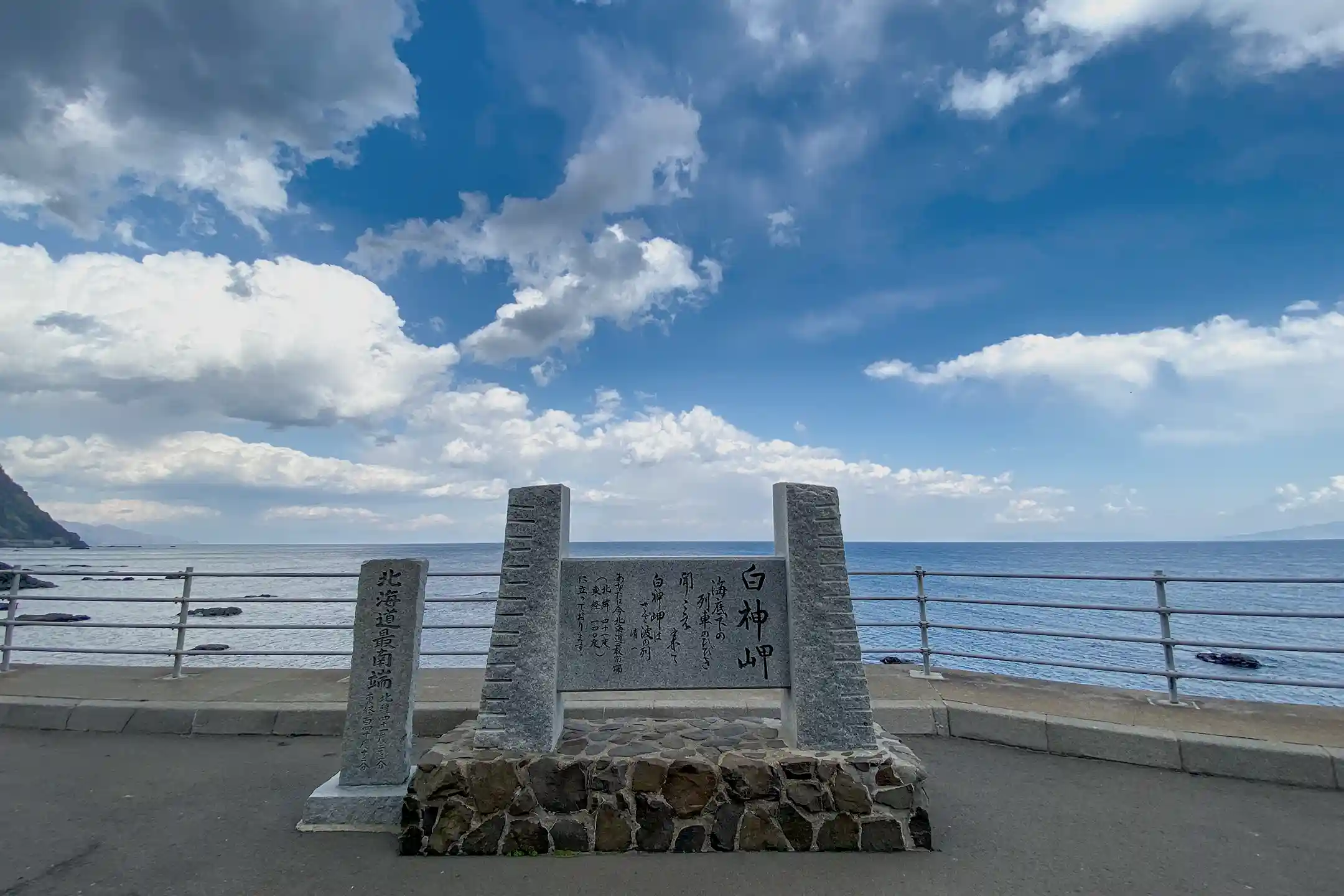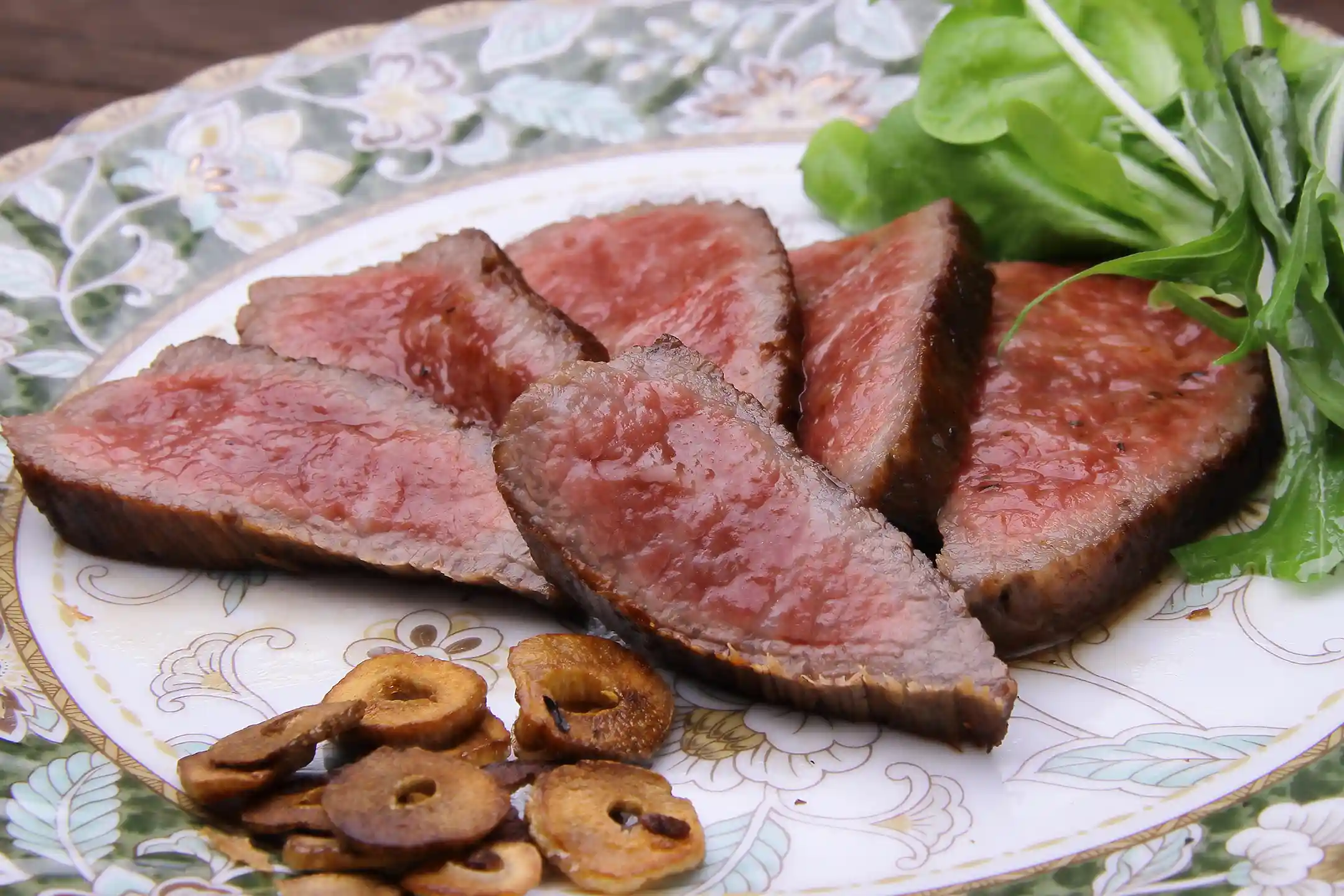Nestled in southern Hokkaido, Matsumae (occasionally written “mastumae”) was once a flourishing castle town and today brims with charm, where nature intersects with a rich cultural heritage. For Western visitors, the term castle town might bring medieval European fortresses to mind, but Matsumae offers a distinctly Japanese take on the concept. In this town, samurai traditions and merchant culture lived side by side, helping each other thrive through a lively exchange of skills and knowledge.
Back in the Edo period, the Matsumae Domain played a crucial role as the only Japanese domain allowed to trade with Ezochi (present‑day Hokkaido). As a busy port of call for the Kitamaebune trading ships, Matsumae prospered from this exclusive trade. It’s interesting to realize that this northernmost region of Japan—viewed by many back then as “the far end” of the country—actually served as an international gateway. You might assume that life out here was completely isolated, but these cross‑cultural interactions give you fresh insight into just how politically and economically vibrant Matsumae was, even in such a far‑flung area.Today, Matsumae’s castle ruins and the streets of its old merchant quarter still echo with Edo‑period charm. As you visit its temples, engage with traditional culture, and savor local cuisine, you’ll quickly realize that Japan’s history and culture aren’t monolithic – they’re shaped by a rich tapestry of diverse influences.
Discovering Historical Heritage—Prosperity of Matsumae Domain and Northern Trade
In the early Edo period, the Matsumae Domain emerged with a unique role, having been entrusted by the shogunate with exclusive trade rights in Ezochi. Because Matsumae couldn’t rely on growing much rice (given Hokkaido’s harsh climate), the people here built a different kind of economy. They focused on trading seafood and furs, which set Matsumae apart from Japan’s largely agricultural society at the time.
As maritime trade routes expanded between Osaka and Hokkaido via the Kitamaebune ships, Matsumae blossomed further as a bustling port town. The castle town buzzed with merchants, artisans, and travelers, blending everyday life with art and sparking new values and ideas. When you visit a culturally dynamic place like this, you’re not just observing an unfamiliar culture from the outside—you can really imagine how various influences came together to shape the town’s lively daily life.
Matsumae Castle—Northern Japan’s Renowned Fortress
Matsumae Castle (also known as Fukuyama Castle) stands as the proud symbol of the Matsumae Domain and is celebrated as Japan’s northernmost authentic fortress. Built in the late Edo period amid increasing pressure from foreign powers, this castle featured an advanced design with thick stone walls, deep moats, and artillery batteries to strengthen its defenses. Such forward‑thinking architecture was a direct response to the global tensions of that era, highlighting how Japan was adapting its strategy in response to Western naval threats.
Today, Matsumae Castle’s grounds have been transformed into a scenic park filled with around 10,000 cherry trees – a spectacle that earns it a spot among Japan’s “Top 100 Cherry Blossom Spots.” Inside the castle’s reconstructed keep, you can find a museum exhibiting samurai armor, swords, and other artifacts that tell the story of Matsumae’s history and its northern trade activities. When you climb up to the top‑floor observation deck, you’re treated to a view of the Tsugaru Strait. Gazing out over the water, you can almost picture the tense historical moments of international contact that once unfolded here.

Historical Tours Led by Experts
If you want to dive even deeper into history, consider taking a guided tour led by a local expert. Exploring old merchant houses and temples with a knowledgeable guide can help answer some fundamental questions you might have, like “Why did Japanese culture flourish so far north?” or “What inspired people to settle here in the first place?”
These tours give you something a book can’t: they immerse you in authentic local anecdotes and personal stories, making history feel alive. By hearing multiple perspectives on the town’s past, you’ll often uncover surprising connections and intricate cultural interactions that you might have missed on your own.
Cultural and Artistic Experiences in Matsumae
You might know that cherry‑blossom viewing (hanami) is popular all over Japan, but Matsumae’s Cherry Blossom Festival—held each spring—has its own special significance. The feudal lords of Matsumae selectively cultivated particular cherry trees over the years, so the blossoms here came to symbolize their authority and pride in a way you won’t find elsewhere.
Flower festivals happen around the world (think of Europe’s famous rose festivals), but experiencing Matsumae’s blossoms with this context in mind gives the celebration an extra layer of meaning.
During the festival, you can enjoy local traditional performances and sample regional specialties. When you understand that these celebrations embody deep local values—like community bonds and a reverence for nature—your experience goes beyond casual sightseeing.
Visiting a workshop where artisans create traditional wooden dolls called kokeshi is another activity you won’t want to miss. This craft made its way to Matsumae from the Tohoku region, and it’s a wonderful hands‑on experience. You can watch the doll‑making process and even try painting one yourself. Instead of treating the finished doll as just another souvenir, you’ll have a deeper appreciation for it—each brushstroke and carved feature reflects the artist’s personal history and creative touch.
Zen and Sutra‑Copying Experiences at Temples
Matsumae’s temples offer a peaceful setting where you can try Zen meditation or the practice of sutra‑copying (known as shakyo). You might already be familiar with meditation techniques back home, but Zen in Japan places a unique emphasis on disciplined posture and breathing. This style of meditation is a chance for profound spiritual renewal, helping you clear your mind through deliberate, focused practice.
Another enriching activity is shakyo, the art of hand‑copying Buddhist scriptures. At first, the idea of painstakingly tracing ancient characters might seem intimidating or unfamiliar. However, as you slowly copy each line of a sutra, you’ll find it encourages a deep sense of calm and reflection. Both of these practices—meditation and sutra‑copying—may be rooted in Japanese tradition, but they highlight universal values like mindfulness, patience, and tranquility that anyone can benefit from in daily life.

Matsumae’s Traditional Crafts Enhancing Daily Life
One of the joys of traveling is discovering traditional crafts that bring local history and values into everyday life. In Matsumae, you might pick up a beautifully painted kokeshi doll or a piece of locally woven textile and find that it fits nicely into your home. Bringing these crafts home isn’t just about having a decoration – it’s like carrying a piece of Matsumae’s story with you. Each item serves as a warm reminder of your journey and the artisans behind it.
At first glance, some Japanese crafts may look very different from what you’re used to. But the more you learn about them, the more you’ll see how they blend historical significance, societal values, and artistic excellence all at once. By embracing these diverse cultural perspectives, you often gain fresh, surprising insights—not just about Japan, but about how art and heritage can resonate with everyone.
Goshuin Pilgrimages to Spark Intellectual Curiosity|Journeys through Culture and History
Goshuin are the ornate stamps and calligraphy you can collect at shrines and temples as proof of your visit. But they're more than just pretty souvenirs – they offer you a personal window into Japan’s religious culture. As you learn about the traditions and seasonal festivals tied to different temples and shrines, you're peeking into centuries of history and everyday life. Just as visiting churches in Europe can teach you about local history, collecting Goshuin in Japan connects you with rich cultural stories.
Recently, some temples and shrines have begun offering special programs for visitors. You can try practices like sutra copying (shakyo) or Zen meditation (zazen), or even carve a small Buddha statue or craft your own Goshuin book. These hands‑on experiences make learning about Japan’s religious heritage more engaging and fun.

Distinctive Regional Goshuin and Their Stories
Goshuin designs vary widely by region. In snowy northern areas, for example, a temple’s stamp might feature a delicate winter landscape, while elsewhere you might find motifs from local legends or traditional crafts. Each stamp is like a story in ink, reflecting local pride, history, and customs. Traveling from shrine to shrine, you're piecing together a broader understanding of Japan’s culture, with every Goshuin adding a new perspective.
Special Programs to Deepen Cultural Understanding
For an even deeper understanding, join a special lecture or workshop at a temple or shrine where experts share insights into architecture, scriptures, and folklore. Exploring these places with an expert, you’ll see that even unfamiliar traditions have universal human elements – what once felt “mysterious” becomes relatable when you learn the history behind it.
Luxury Stays in Matsumae—Where Tradition Meets Sophistication
Matsumae maintains the feel of its historic castle town while offering contemporary elegance in its accommodations. Some former samurai residences and merchant homes have been turned into high‑end inns that blend historic ambiance with modern luxury. Staying in one of these places is like stepping back in time, yet you’ll still enjoy all the modern comforts. Japanese architecture here is quite different from European heritage hotels, but every detail shows generations of craftsmanship.
Despite the old‑world charm, these accommodations ensure you won’t miss any modern conveniences. Many hide high‑tech features behind traditional exteriors: underfloor heating to keep you warm, top‑notch insulation, even Wi‑Fi, all integrated without disturbing the historical vibe. For international visitors, this balance of tradition and technology is intriguing; it offers a fresh perspective on how innovation can enhance, rather than detract from, cultural heritage.
Culinary Delights Featuring Local Ingredients and Creative Sweets
When it comes to dining, Matsumae is blessed by both the sea and the land. Local chefs take full advantage of this, crafting creative dishes with the freshest seafood and the region’s famous kombu (kelp). The cuisine here is simple in the best way, letting high‑quality ingredients speak for themselves, and it changes with the seasons so you always get to taste what’s fresh. Dining often feels like being welcomed into a local home—warm, simple, and made memorable by premium seasonal ingredients.
Save room for dessert. Matsumae offers a delightful mix of sweet treats, from elegant traditional wagashi confections to Western‑style pastries bursting with local berries and melons. Some patisseries even get inventive by incorporating kelp or other seaweed into their recipes, showcasing a playful fusion of local flavors with global dessert trends. What might seem like a uniquely Japanese treat at first often embodies the community’s spirit of innovation.

The Appeal of Eco‑Friendly Luxury Stays
Matsumae’s dedication to sustainability is also making its mark on local hospitality. A number of inns and hotels now emphasize eco‑friendly practices while still preserving a traditional atmosphere. For instance, you might find solar panels in the garden and toiletries made from recycled materials. By combining time‑honored building materials with modern green technology—like better insulation and energy‑efficient climate control—these accommodations reduce their environmental footprint without sacrificing comfort or style.
Eco‑conscious luxury is a growing trend worldwide, but in Matsumae it comes with a distinctly local touch. The way these establishments blend historical aesthetics with modern sustainability measures reflects Japan’s long‑held philosophy of living in harmony with nature. As a guest, you’ll enjoy a comfortable stay along with the satisfying feeling that you’re supporting sustainable practices.

Smart and Sustainable Travel Experiences in Matsumae
If you plan to drive to Matsumae in an EV, be aware that charging stations are still limited—though more are gradually popping up across Hokkaido—so be sure to check ahead for the nearest charging spots. The upside of driving electric here is that it's quiet and emission‑free, which means you can fully savor Matsumae’s peaceful landscapes and old‑town atmosphere.
Sustainability in Matsumae isn’t just a buzzword—it’s part of the local lifestyle. You’ll notice more and more restaurants, cafés, and shops embracing eco‑friendly practices — for instance, a café that runs on renewable energy and serves organic produce, or a shop that sells only natural, additive‑free products. These experiences show how caring for the environment and enjoying yourself can go hand‑in‑hand. You might even pick up a few new eco‑conscious habits to bring home.
Participatory Environmental Conservation Tourism
If you love the idea of giving back to nature, Matsumae welcomes travelers to help with conservation efforts – for instance, by joining a community beach clean‑up (see if one is scheduled during your visit). Not only do you help preserve the beautiful scenery, but you also connect with locals in a meaningful way.

Conclusion
By visiting Matsumae Castle—the northernmost authentic fortress in Japan—strolling through the nostalgic streets of its castle town, and engaging in these rich cultural experiences, you’ll come to realize that Matsumae isn’t just another tourist spot. It’s the place where Hokkaido’s cultural identity began, shaped by a deep history.
Joining a guided tour will give you even more insight, not only into Matsumae’s political and economic history, but also into its everyday life and traditions. Whether you’re hand‑copying a Buddhist sutra, practicing Zen meditation, or painting your own kokeshi doll, these activities offer a wonderful chance to step back from the rush of daily life—and maybe see yourself and the world a bit differently.
Matsumae is also embracing sustainable tourism—from expanding EV charging options to inviting visitors to join conservation projects. It’s a place where history and cutting‑edge ideas coexist in harmony. So why not treat yourself to a visit? Immerse yourself in Matsumae’s multifaceted culture and natural beauty for a restorative escape that nourishes your mind and spirit.
Author Bio





.webp)
.webp)